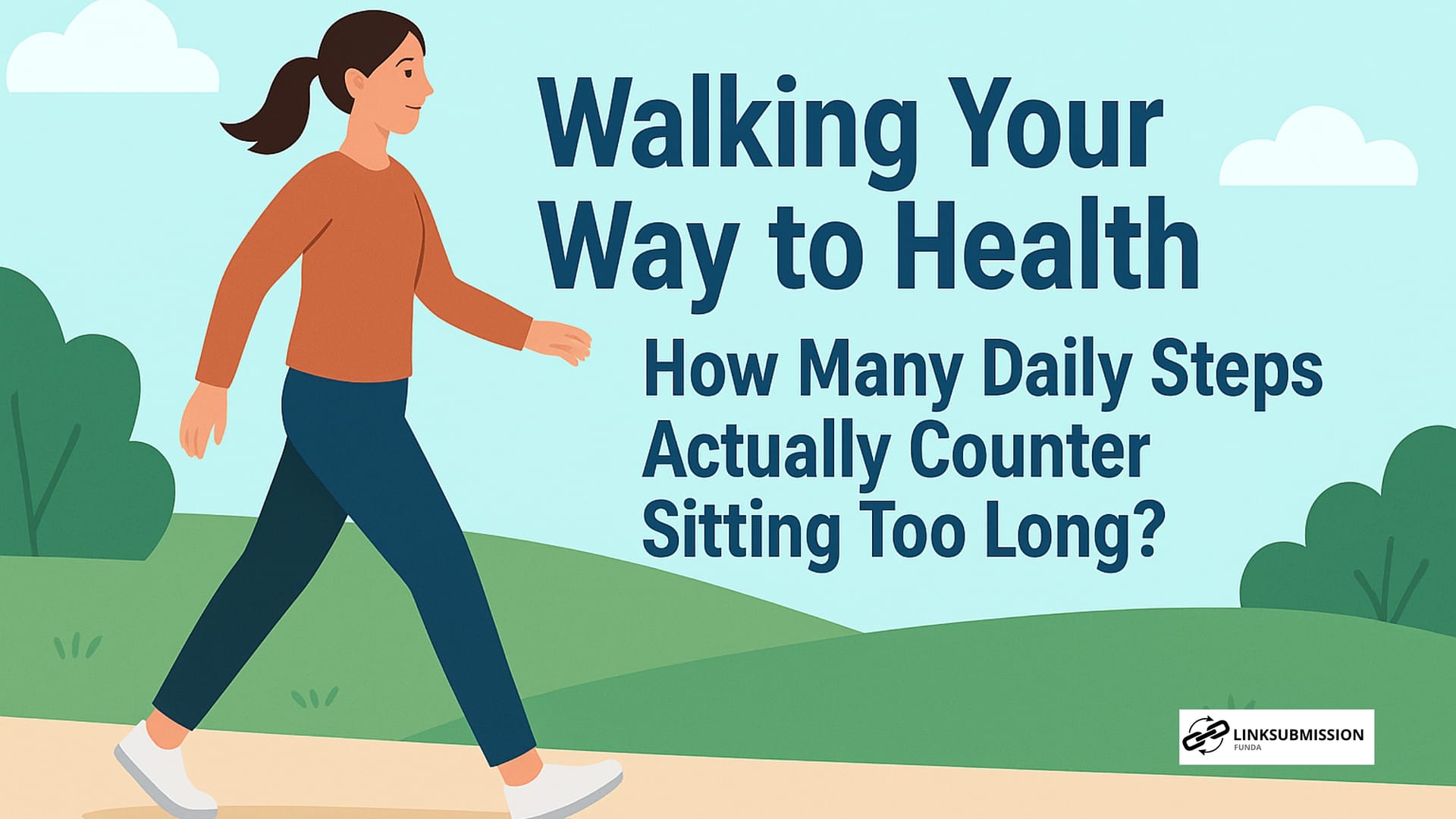In today’s digital-driven lifestyle, many of us spend hours glued to our chairs—whether it’s at work, during long commutes, or while relaxing at home. This prolonged sitting has quietly been linked to a number of health concerns, including obesity, diabetes, heart disease, and even reduced life expectancy. The good news? Something as simple and accessible as walking can help offset much of this risk. But the question remains: how many steps do you really need each day to protect yourself from the harmful effects of sitting too long?
Why Sitting Too Long is a Problem
Our bodies are built for movement, yet modern life has made sitting the default. On average, people sit for 7–10 hours a day, often without realizing it. Extended sitting slows down metabolism, reduces circulation, weakens muscles, and even affects posture. Research has shown that “sedentary behavior” is an independent risk factor for health problems, meaning even regular exercise may not completely reverse its effects if most of your day is still sedentary.
This is where walking comes in—a simple, low-impact activity that almost anyone can do without equipment or special training.
The 10,000 Steps Myth and the Science Behind It
You’ve probably heard that 10,000 steps a day is the golden standard. Interestingly, this number wasn’t originally based on science but came from a Japanese marketing campaign in the 1960s. However, modern research suggests that while 10,000 steps is beneficial, you don’t necessarily need to hit that exact number to see health improvements.
Studies indicate that benefits start showing up at around 6,000 to 8,000 steps per day. For older adults, even 4,000 to 6,000 steps can reduce risks of cardiovascular disease and early death. The key is consistency—taking regular walks spread across the day helps break up sedentary time and keeps the body active.
How Walking Helps Counter Sitting
- Improves Circulation
Walking encourages better blood flow, preventing stiffness and reducing the risk of blood clots that can form from sitting too long. - Boosts Metabolism
Even moderate walking activates muscles and burns calories, counteracting some of the slowdown caused by sedentary behavior. - Supports Mental Health
Short walks, especially outdoors, help reduce stress, improve mood, and increase focus. This can be a much-needed reset during long work hours. - Strengthens Muscles and Joints
Regular walking engages leg, hip, and core muscles, keeping them strong and preventing stiffness. - Lowers Risk of Chronic Diseases
Studies link daily walking with reduced risks of heart disease, type 2 diabetes, and hypertension.
Breaking Down the Numbers: How Many Steps Do You Need?
- 4,000–5,000 steps/day: A good baseline for seniors or beginners, offering noticeable health benefits.
- 6,000–8,000 steps/day: Shown to significantly reduce mortality risk and counteract long sitting hours for most adults.
- 8,000–10,000+ steps/day: Ideal for people aiming for maximum cardiovascular, weight management, and endurance benefits.
The focus shouldn’t just be on hitting a number but on incorporating movement throughout the day. For example, walking for 5 minutes every hour at work can make a significant difference.
Easy Ways to Add More Steps to Your Day
- Take the stairs instead of the elevator.
- Walk while on phone calls or during virtual meetings.
- Park farther away from entrances when shopping or commuting.
- Do walking breaks instead of sitting breaks at work.
- Plan evening strolls with family or friends—it’s social and healthy.
Small, intentional changes add up quickly, making it easier to reach daily step goals without feeling overwhelmed.
The Balance Between Sitting and Walking
Walking is not about replacing all sitting but about balancing it. Think of it as an antidote—each time you get up and move, you are reducing the harm of prolonged stillness. Even short bursts of walking—2 to 5 minutes every half hour—can improve blood sugar levels and reduce the risks associated with sitting for extended periods.
Final Thoughts
Walking is one of the most underrated forms of exercise. You don’t need expensive equipment, gym memberships, or specialized training—just a comfortable pair of shoes and a bit of time. While 10,000 steps might be an inspiring goal, even 6,000 to 8,000 steps daily can protect your body from the dangers of sitting too long.
So, the next time you’ve been sitting for hours, stand up, take a walk, and remember—every step you take is an investment in your long-term health.





